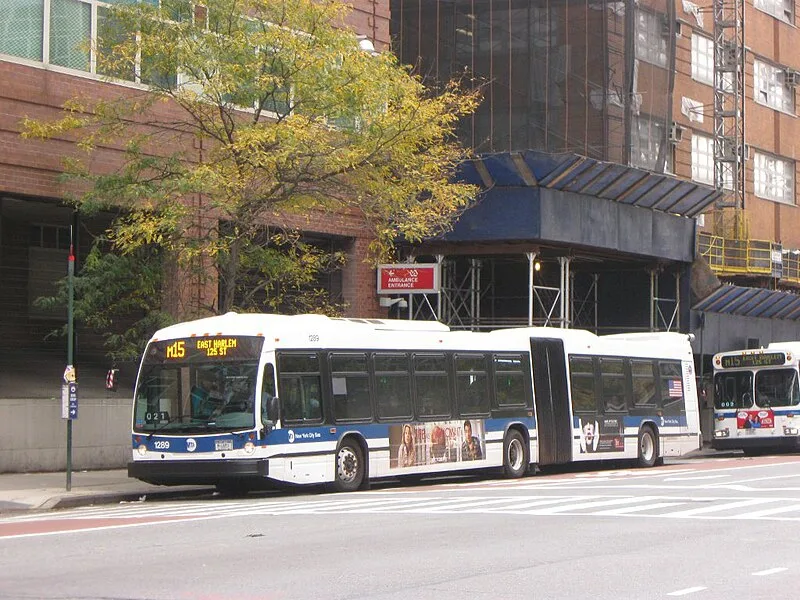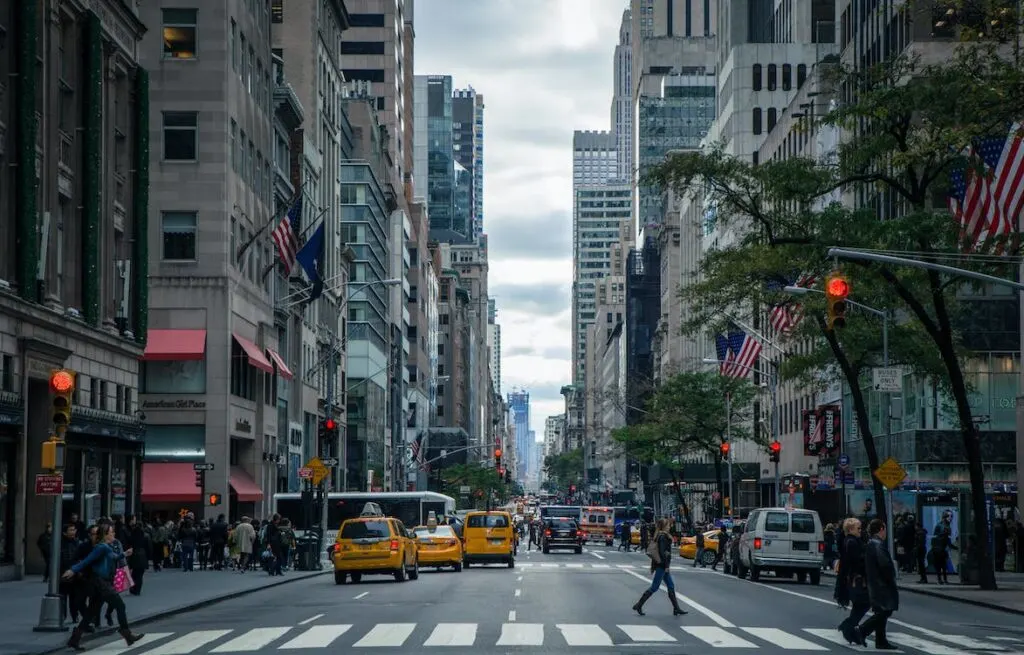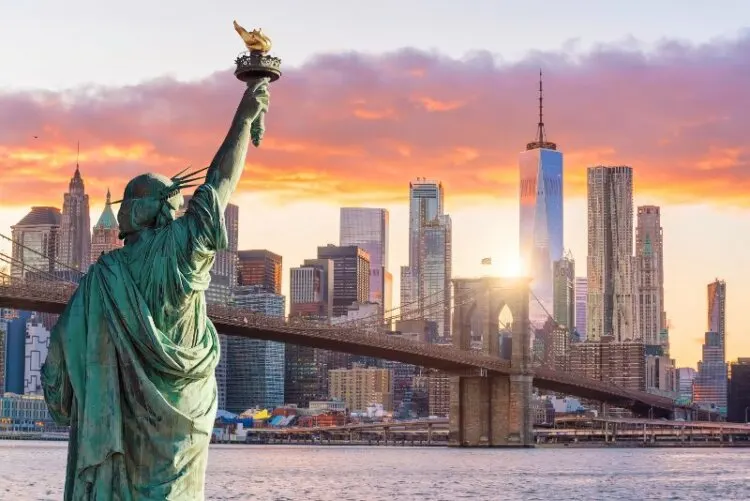Navigating a new city can be daunting, especially when deciphering the local public transport system. If New York City is your next destination and bus travel is your preferred mode, then buckle up! We have the ultimate guide ready to unravel the mystery of the M15 Bus Route, its schedule, and ensure you catch your ride with ease and confidence. No more anxieties about missed buses or wrong routes; we’re here to make your Big Apple exploration absolutely seamless!
The M15 bus is a public transportation service in New York. It follows a specific route that includes various stops along the way. For the most accurate and up-to-date information on its route and schedule, including any changes or delays, please visit our website or check with the local transportation authority in your area.
Table of Contents
Overview of the M15 Bus Route

The M15 bus route in New York City is undoubtedly one of the city’s most vital and frequently used bus routes. Covering a distance of approximately 13 miles, it passes through busy streets and diverse neighborhoods, connecting passengers from the Upper East Side to the Lower East Side of Manhattan. Imagine stepping onto the bustling streets of 1st Avenue, with its vibrant mix of local businesses and iconic landmarks. As you board the M15 bus, you become part of a transportation system that keeps this vibrant city moving.
The M15 route operates between East Harlem at 126th Street and South Ferry in Lower Manhattan. Along the way, it traverses notable areas such as Museum Mile, Union Square, and Chinatown. Picture yourself gliding past Museum Mile, home to world-renowned institutions like the Metropolitan Museum of Art and the Guggenheim Museum. The bus journey becomes an exciting visual experience as you witness skyscrapers towering above, historic sites intermingling with modern architectures, and the vibrant energy that encapsulates every corner of Manhattan.
As one of the busiest bus routes in New York City, M15 buses are scheduled to arrive approximately every 5-10 minutes during peak hours and every 10-20 minutes during off-peak times. It operates seven days a week, ensuring commuters and tourists alike have access to reliable transportation regardless of the day or time. Imagine being able to rely on this consistent schedule whether you’re heading to work on a hectic Monday morning or planning a leisurely weekend stroll through bustling markets in Chinatown.
Understanding the Route Map and Schedule

To navigate the M15 bus route effectively, it’s important to understand both the route map and schedule. The MTA provides comprehensive resources that can assist riders in planning their journeys efficiently.
Firstly, let’s focus on the route map, which showcases the different stops along the M15 bus route. This visual representation allows passengers to pinpoint where they need to board and alight. It highlights key intersections, landmarks, and transfer points, enabling riders to plan their trips accordingly. Imagine studying the route map and discovering that there’s a stop just a short walk away from your favorite deli or cozy café. Knowing this information empowers you to make strategic decisions about when and where to catch the bus.
Equally important is understanding the M15 bus schedule. The schedule provides detailed information on departure times for each stop along the route, ensuring passengers can plan their journeys down to the minute. By familiarizing yourself with the schedule, you’ll know precisely when the next bus is expected to arrive at your stop, allowing for better time management and minimizing waiting time. Consider how beneficial it would be to have a clear idea of when you should step out of your apartment, leading to a hassle-free commute without unnecessary delays.
Both the route map and schedule can be accessed through various mediums, including printed brochures available at transit hubs and online platforms such as the MTA website or third-party transportation apps. Utilizing these resources will enable you to make informed choices about your journey, unlocking seamless travel experiences in the bustling streets of Manhattan.
To navigate the M15 bus route effectively, it is important to utilize the resources provided by the MTA, such as the route map and schedule. The route map helps passengers identify stops, intersections, landmarks, and transfer points along the route, enabling them to plan their trips strategically.
Understanding the schedule allows riders to know exactly when the next bus will arrive at their stop, minimizing waiting time and improving time management. These resources can be accessed through printed brochures at transit hubs or online platforms like the MTA website or transportation apps. By utilizing these tools, travelers can make informed choices and enjoy seamless travel experiences in Manhattan.
See Related: How to Take the Bus from Ithaca to Syracuse: A Travel Guide
Major Stops on the M15 Bus Route

The M15 bus route is a vital artery in the heart of Manhattan, connecting passengers through various neighborhoods and landmarks. Let’s take a closer look at some of the major stops along this bustling route.
Starting in East Harlem, the M15 begins its journey at the intersection of 126th Street and 2nd Avenue. This area is known for its vibrant culture and diverse community. As the bus makes its way south, it passes through notable locations such as the iconic Museum Mile on 5th Avenue, home to world-renowned institutions like the Metropolitan Museum of Art and the Guggenheim Museum.
Continuing further down, the M15 crosses paths with Union Square, a bustling hub where many New Yorkers gather and connect. With its vibrant green space and surrounding shops and restaurants, Union Square is often buzzing with activity.
As the bus ventures into downtown Manhattan, it reaches important landmarks such as City Hall Park and South Street Seaport. City Hall Park offers a peaceful retreat amidst the city’s hustle and bustle, while South Street Seaport showcases historic architecture and stunning waterfront views.
Further along the route, the bus passes by Chinatown, a vibrant neighborhood rich in history and cultural heritage. Here, passengers can explore an array of authentic Asian cuisine, unique markets, and colorful festivals throughout the year.
Finally, the M15 concludes its journey at Water Street/Pearl Street in Lower Manhattan, just a stone’s throw away from Wall Street. This financial district epitomizes New York City’s economic prowess and global significance.
Whether you’re a resident commuting to work or a visitor exploring the wonders of Manhattan, riding the M15 bus allows you to experience the city’s heartbeat firsthand. It offers travelers an opportunity to soak up the energy of diverse neighborhoods while conveniently connecting them to key destinations throughout their journey.
See Related: Q22 Bus Route and Schedule in New York City: All You Need to Know
Passenger Experience on the M15 Bus
The M15 bus not only takes passengers on a journey through Manhattan but also offers them a unique experience during their commute. Let’s dive into what you can expect as a passenger on the M15 bus.
Passengers on the M15 can expect a clean and well-maintained interior onboard the bus. The seats are comfortable, allowing you to relax or catch up on work while traveling. There is also ample space for standing passengers during peak hours, ensuring everyone can board without overcrowding.
The M15 is equipped with features to enhance passenger convenience and safety. It offers real-time arrival information at select stops, allowing riders to plan their trips more efficiently. Additionally, many buses on this route provide accessibility features such as ramps and priority seating for passengers with disabilities. Imagine being able to hop on the bus knowing that your needs will be accommodated, regardless of mobility challenges or limitations.
Another benefit of riding the M15 bus is its extensive service frequency. Buses run frequently along this route, ensuring minimal wait times for passengers. This is especially valuable for individuals who rely on public transportation for their daily activities or tourists exploring the city and wanting to maximize their time.
While busy during peak hours like most public transportation routes in New York City, the M15 still offers an efficient way to move around Manhattan for both residents and visitors. It allows you to take in the sights and sounds of the city while avoiding traffic congestion and parking hassles.
By riding the M15 bus, you become part of the vibrant tapestry that makes up New York City’s diverse population. You’ll share your journey with people from different backgrounds, each with their own stories and experiences to share.
Accessibility and Amenities
When traveling on the M15 bus route, accessibility and amenities play a crucial role in ensuring a comfortable and convenient journey for passengers. The Metropolitan Transportation Authority (MTA) strives to make their buses accessible to all individuals, including those with disabilities. The M15 buses are equipped with lift ramps or kneeling capabilities to assist passengers using mobility aids such as wheelchairs or walkers.
Imagine you’re a student commuting to class every day on the M15 bus. Thanks to the wheelchair lift ramp, you’re able to board the bus easily with your wheelchair without any hassle or assistance from others.
In addition to accessibility features, the M15 buses also offer various amenities to enhance the overall passenger experience. For instance, each bus is equipped with air conditioning and heating systems to ensure a comfortable ride regardless of the weather conditions. Charging ports are available on some buses, allowing passengers to charge their electronic devices on the go.
Consider this scenario: It’s a hot summer day in New York City, and you’re on your way downtown for an important meeting. Luckily, the air conditioning on the M15 bus keeps you cool and composed throughout your journey, allowing you to arrive fresh and ready for your appointment. Now that we’ve explored the accessibility and amenities provided by the M15 bus service let’s dive into some key destinations along its route.
Key Destinations Along the M15 Route

The M15 bus route is one of the busiest routes in New York City, connecting various neighborhoods and popular destinations along its path. Whether you’re a local resident or a visitor, understanding these key stops will ensure you can easily navigate the city using the M15 bus.
One of the prominent destinations along the M15 route is Union Square. This bustling area attracts locals and tourists alike with its vibrant atmosphere, shops, restaurants, and proximity to major attractions. You can hop off the bus and explore the vibrant Union Square Park, browse through the stalls of the famous Greenmarket, or indulge in some shopping at nearby stores.
Picture yourself stepping off the M15 bus at Union Square. The sights and sounds of the city surround you as you take a leisurely stroll through the park, enjoying the bustling energy and vibrant street performances. It’s an experience that truly immerses you in the heart of New York City.
Another key destination along the M15 route is South Street Seaport. This historic district offers a unique blend of history, culture, and stunning waterfront views. Visitors can explore centuries-old buildings converted into museums, dine at scenic waterfront restaurants, or take a boat cruise to enjoy breathtaking views of the Brooklyn Bridge and Statue of Liberty.
As you step off the M15 bus near South Street Seaport, you’re greeted by the salty breeze and the sight of towering ships docked at Pier 17. The area’s rich maritime history comes to life as you wander through cobblestone streets and marvel at beautiful historic buildings.
These are just a couple of examples of the many exciting destinations along the M15 bus route. Whether you’re seeking cultural experiences or delicious dining opportunities, this route will take you to some of New York City’s most iconic spots.
● Run by New York City Transit, the M15 bus, in 2020, provided service to an estimated daily ridership of 46,448 people on weekdays.
● According to NYC Transit reports, the M15 bus covers about 16 miles from East Harlem to Lower Manhattan.
● In 2021, despite the pandemic’s effect on public transportation usage, the M15 bus maintained a punctuality rate of around 78%.
See Related: NYC to Binghamton Bus: Transportation, Schedule, and Tickets
Comparing M15 with Alternative Bus Services
When it comes to navigating through the bustling streets of New York City, the M15 bus stands as one of the vital arteries of public transportation. However, it’s always useful to consider alternative bus services that may offer different advantages and disadvantages. Let’s take a closer look at how the M15 compares to some of these alternatives.
First, let’s consider the M104 bus, which runs along Broadway and West End Avenue. While both the M15 and M104 serve as important north-south routes in Manhattan, there are some key differences to note. The M104 offers a more scenic route, passing through iconic neighborhoods like Lincoln Center and Columbia University. On the other hand, the M15 provides a more direct route alongside bustling thoroughfares such as 1st Avenue and 2nd Avenue. Depending on your destination and preferences, you might choose one over the other for convenience or sightseeing opportunities.
Next, let’s explore the M5 bus, which travels along Fifth Avenue and Riverside Drive. Unlike the M15, which primarily serves Manhattan’s East Side, the M5 extends further into Upper Manhattan and even ventures into the Bronx. If your itinerary takes you beyond the boundaries of Lower Manhattan, considering the M5 as an alternative may be worthwhile. Additionally, if you prefer a less crowded bus ride with potentially smoother traffic flow due to fewer intersections, the M5 could be a suitable option.
For those seeking a faster commute between Manhattan and Brooklyn, the B62 bus might pique your interest. Operating between Williamsburg and Downtown Brooklyn, this route provides an alternative cross-borough connection compared to the M15. Choosing between these two options would largely depend on your specific origin and destination points. If you’re based in Lower Manhattan or need access to areas like Chinatown or East Village, sticking with the M15 would likely be more convenient. However, if you’re focused on Brooklyn or looking for a change of scenery, the B62 bus offers an alternative route to explore.
Lastly, we can’t forget about the iconic New York City subway system when considering alternatives to the M15 bus. While buses are known for their flexibility and ability to navigate different streets, the subway provides a quicker and more efficient way to travel longer distances within the city. If speed is of utmost importance to you and your destination is well-served by subway lines, opting for underground travel may be a wise choice.
In conclusion, when comparing the M15 with alternative bus services, it’s crucial to consider factors such as proximity to your desired destination, scenic routes, potential traffic conditions, and convenience in accessing other boroughs. Each alternative has its own unique features that cater to different needs and preferences. By understanding the nuances of these options, you can make an informed decision that best suits your travel requirements.
Related Resources:
